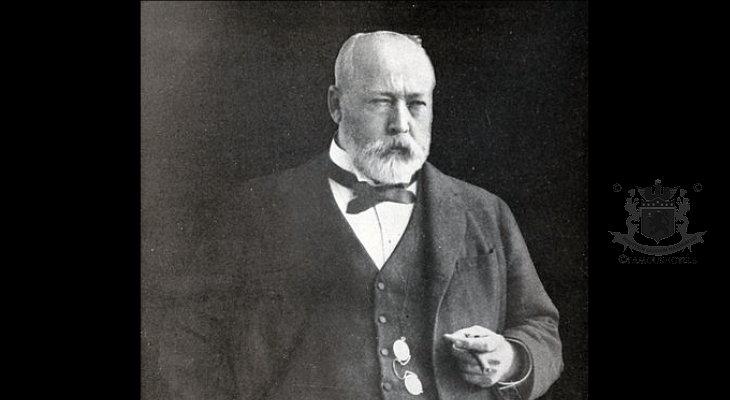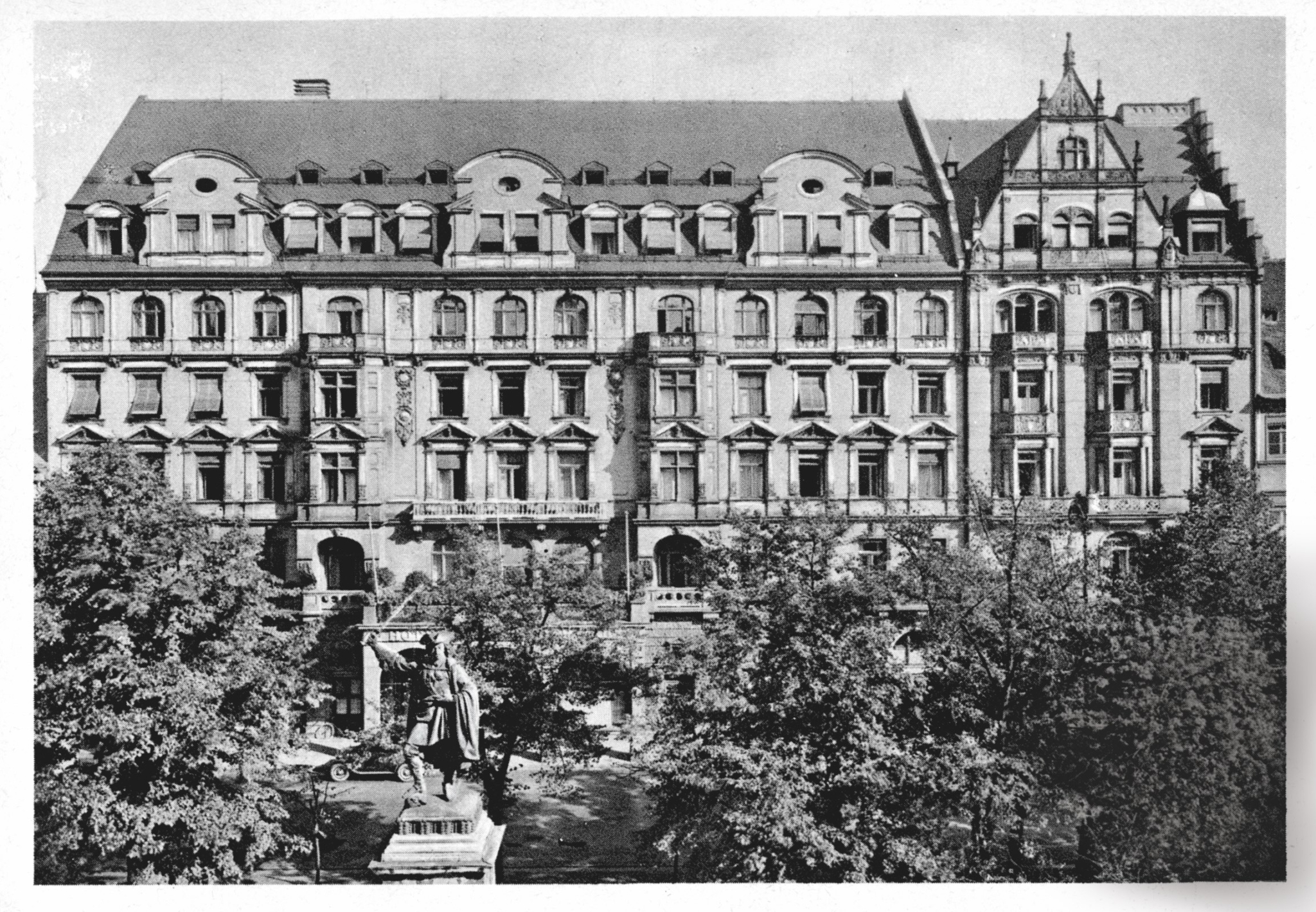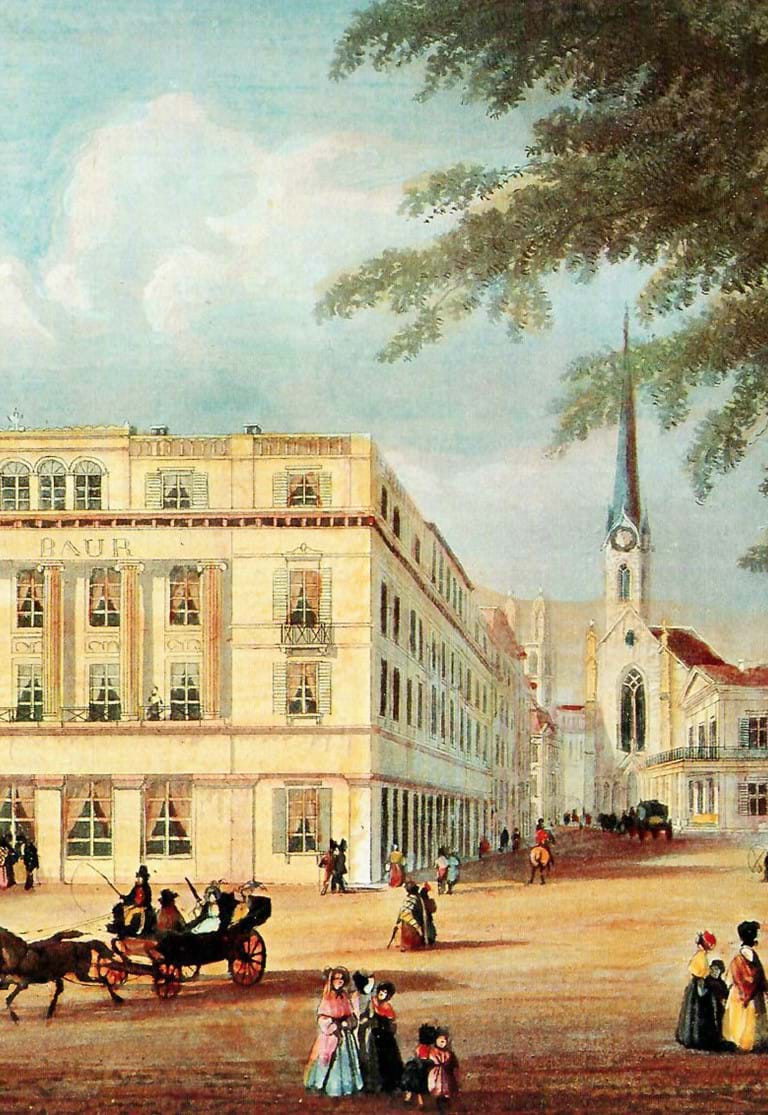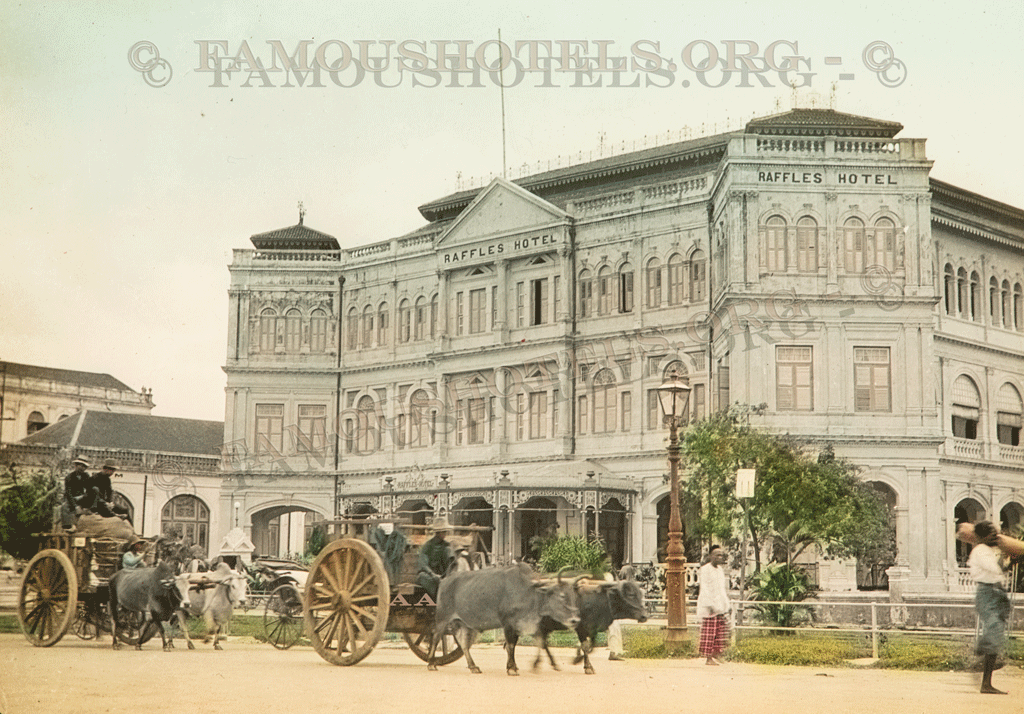William Cornelius Van Horne (1843-1915)
( words)
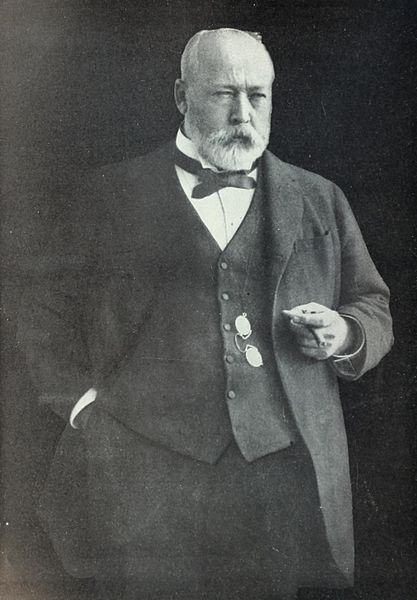 By Stanley Turkel, CMHS
By Stanley Turkel, CMHS
If you can’t export the scenery, we’ll import the tourists
William Cornelius Van Horne was born on February 3, 1843 on a farm in Will County, Illinois. His great grandfather, Jan Cornelissen Van Horne had emigrated from the Dutch Republic in 1635 to the British colonies and settled in New Amsterdam, now known as the Island of Manhattan. The family prospered and became landowners and businessmen who played an important role in the industrial and political development of New York State.
William Van Horne’s father, Cornelius Covenhoven Van Horne, was trained as a lawyer at Union College. He is said to have “chafed at the dullness of life in that profession”, and cast it all aside to go west in 1832 with his wife and two children, seeking his fortune. But, life in the west was hard. His first wife and two children died in a fire that destroyed his home, barn, and law books. Cornelius Van Horne married for a second time to Mary Minier Richards in 1842 (William’s mother), and borrowed money from his brother to buy another farm.
Mary Minier Richards was the daughter of a South German father and a Pennsylvania mother of French descent. William was the eldest of five children.
In 1854, tragedy struck the Van Horne family again when William’s father died from cholera. William Van Horne was eleven at the time. He was able to help support the family when he started his first job at age 14 to work as a telegrapher with the Illinois Central Railway in the company’s Chicago office. Thus began his career as one of the greatest railway men ever known.
Between 1858 and 1864, he served in various capacities for the Michigan Central Railway. He joined the Chicago & Alton Railway in 1864 and within eight years had worked his way from ticket agent to train dispatcher, then Superintendent of Telegraphs and finally to Division Superintendent. Subsequently, he showed a remarkable aptitude for rebuilding faltering American railroad lines into paying propositions; his consolidation of the Milwaukee Road (1879) being the most notable example.
Van Horne was a renaissance man who was an amateur geologist, first-rate gardener, caricaturist, conjuror, mind reader, violinist, practical joker, gourmet and marathon poker player.
In 1864, at the age of 21, Van Horne commenced a new position as train dispatcher in Bloomington, Illinois and met his future wife, Lucy Adaline Hurd. She was the daughter of an Illinois civil engineer involved in railroad construction and was well educated with a degree from Lombard College in Galesburg, Illinois. The couple were married in March 1867 and had three children: Adaline (born 1868), William (born 1871, died at age five), and Richard Benedict (1877), known as “Bennie”.
One year after his marriage, William Van Horne achieved one of his greatest aspirations, to become general superintendent of the Illinois Central Railway, and to have his own private car on the line. At the time of this achievement, he was only 29 years of age and the youngest railroad head in the world. Another great opportunity unfolded in the fall of 1881, when Van Horne was asked if he would become general manager of the Canadian Pacific Railway (CPR). At that time Van Horne was the superintendent for the Chicago, Milwaukee, and St. Paul Railways.
He was an executive to be reckoned with. He used his remarkable skills to motivate his workers and always found a way to get any necessary supplies needed to finish the railway. He attracted 12,000 workers to build track across the rocky Canadian Shield by offering them a salary of two dollars for a 15-hour work day. Since some of this land was known as “200 miles of engineering impossibilities,” Horne was able to motivate the construction employees to prove this wrong. He would often show up at work sites on a flat car or wagon in order to encourage the workers.
With Horne’s savvy and motivation, the railway, was completed on November 7, 1885 ahead of schedule with money left over. The first passenger train left Montreal for Port Moody, British Columbia on June 28, 1886. In 1888, William Van Horne was named President of the Canadian Pacific Railway and in 1898, he became Chairman of the Board. In 1894, he was awarded a knighthood for his remarkable achievements.
To build up traffic, Van Horne directed the fabrication of increasingly complex systems that integrated agricultural and timber lands, grain elevators, flour mills, port facilities and terminals, maritime fleets, express and telegraph operations, passenger and tourist services, including large hotels.
Five years after the last spike was driven, Sir William Van Horne visited New Brunswick to inspect the province’s railway system and to arrange for its lease to the Canadian Pacific. In his travels he came upon St. Andrews and fell in love with the exquisite beauty of Passamaquoddy Bay with its protected islands. The Van Hornes purchased the southern tip of Minister’s Island in 1892, and there, for the next 25 years, Sir William worked at creating a self-sufficient summer haven.
During the construction of the railway, Van Horne realized that he could bring tourists into Canada using the railway. With that in mind, he ordered the construction of several resorts along the railway where people come to enjoy the scenery, the hunting, and the fishing. Noted for his famous quote, “If you can’t export the scenery, we’ll import the tourists”, Van Horne built Mount Stephen House high in the wilds of the Canadian Rocky Mountains, and began welcoming guests to this first-ever Canadian Pacific Hotels property in 1886.
With the Canadian government’s blessing, Van Horne and his successors built the following world-class resort hotels and lodges:
-
Banff Springs Hotel, Banff, Alberta
-
Chateau Lake Louise, Lake Louise, Alberta
-
Chateau Frontenac Hotel, Quebec City, Quebec
-
Fairmont Palliser Hotel, Calgary, Alberta
-
Place Viger Hotel and Railway Station, Montreal Quebec
-
Jasper Lake Lodge, Jasper, Alberta
-
Prince of Wales Hotel, Waterton Lakes National Park, Alberta
-
Emerald Lake Lodge, Yoho National Park, British Columbia
-
Lake O’Hara Lodge, Lake Louise, Alberta
-
Simpson’s Num-Ti-Jah Lodge, Lake Louise, Alberta
-
Abbot Pass Hut, Canmore, Alberta
-
Skoki Lodge, Lake Louise, Alberta
-
Mount Assiniboine Lodge, Mount Assiniboine Provincial Park, Canmore, Alberta
-
Brewster’s Shadow Lake Lodge and Cabins, Banff National Park, Alberta
-
Twin Falls Chalet, Yoho National Park, Connaught, Calgary, Alberta
After the Spanish-American War, Van Horne became one of the chief promoters of railway and industrial enterprise in Cuba. In May 1894, he was knighted by Queen Victoria in acknowledgement of his distinguished public service.
Van Horne was flamboyant, outspoken and multi-talented. His appetites were legendary as was his sophistication. He had a passion for art and he dabbled in architecture. Incredibly, while the CPR’s contract with the government dictated completion of the road within a decade, Van Horne – through sheer determination and talent – found ways to finish it in five years. Even more remarkably, once Van Horne had completed the CPR, he operated it and, despite the economic malaise for most of the 1880s and 1890s, made it into a paying proposition. Surely, the Canadian Pacific’s role as an instrument of Canadian nationalism would have followed a different course, had the American Van Horne not been at the helm.
On September 11, 1915, Sir William Cornelius Van Horne died at 72 years of age at his home in Montreal. He was buried in his hometown of Joliet, Illinois.
A must read — by Stanley Turkel:
Great American Hoteliers: Pioneers of the Hotel Industry (2009)
During the thirty years prior to the Civil War, Americans built hotels larger and more ostentatious than any in the rest of the world. These hotels were inextricably intertwined with American culture and customs but were accessible to average citizens. Stephen Rushmore writes in the Foreword: “Drawing from more than 40 years of industry experience including managing some of the largest New York City hotels, Turkel captures the spirit of each of these pioneers and relates their achievements to important lessons that we can learn from.”
Built To Last: 100+ Year-Old Hotels in New York (2011)
These thirty-two featured hotels have defied the passage of time for a variety of reasons, many explicable, some beyond explanation, all miraculous. Bjorn Hanson, Ph.D. writes in the Foreword: “Stanley Turkel is unique in his passion about the history of the United States lodging industry; he pursues and shares this passion by compiling information about great hoteliers and hotels for articles, updates for his clients, and this, the second of his two hotel books.”
Built To Last: 100+ Year-Old Hotels East of the Mississippi (2013)
All the eighty-six hotels featured in this book have unique and singular stories describing their creation, survival and revival. The book contains eighty-six antique postcard illustrations and a Foreword by Joseph McInerney, President and CEO Emeritus of the American Hotel & Lodging Association: “Stanley Turkel is one of the best writers I know at capturing our history – the “old” – and infusing it with new life and relevance.”
Hotel Mavens: Lucius M. Boomer, George C. Boldt and Oscar of the Waldorf (2014)
Hotel Mavens tells the interesting stories of the following pioneers and the hotels they built and operated:
• Lucius Boomer, one of the most famous hoteliers of his time, was Chairman of the Waldorf-Astoria Hotel Corporation.
• George C. Boldt who was the genius of the original Waldorf-Astoria. It was said of him that he made innkeeping a profession and, more than any man, was the creator of the modern American hotel.
?• Oscar of the Waldorf was the superstar of his time and one of the stalwarts who managed both the original and the current Waldorf-Astoria.
Sam Roberts in the New York Times wrote:
"Nostalgia for the city's caravansaries will be kindled by Stanley Turkel's Hotel Mavens: Lucius M. Boomer, George C. Boldt and Oscar of the Waldorf". The fact-filled book by Mr. Turkel, an industry consultant, explains, among other things, the history of the hyphen (recently excised) in the name of the Waldorf Astoria, which inspired a mid-block street and even a song."
Great American Hoteliers Volume 2: Pioneers of the Hotel Industry (2016)
Lawrence P. Horwitz, Executive Director, Historic Hotels of America, writes in the Foreword: “This book is an excellent history book with insights into seventeen of the great innovators and visionaries of the hotel industry and their inspirational stories.”
These important and largely unknown biographies include Stewart William Bainum, Curtis Leroy Carlson, Cecil Burke Day, Louis Jacob Dinkler, Eugene Chase Eppley, Roy C. Kelley, Arnold S. Kirkeby, Julius Manger, Robert R. Meyer, Albert Pick, Jr., Jay Pritzker, Harris Rosen, Ian Schrager, Vernon B. Stouffer, William Cornelius Van Horne, Robert E. Woolley and Stephen Allen Wynn.
All of these books can be ordered from AuthorHouse by visiting www.stanleyturkel.com

